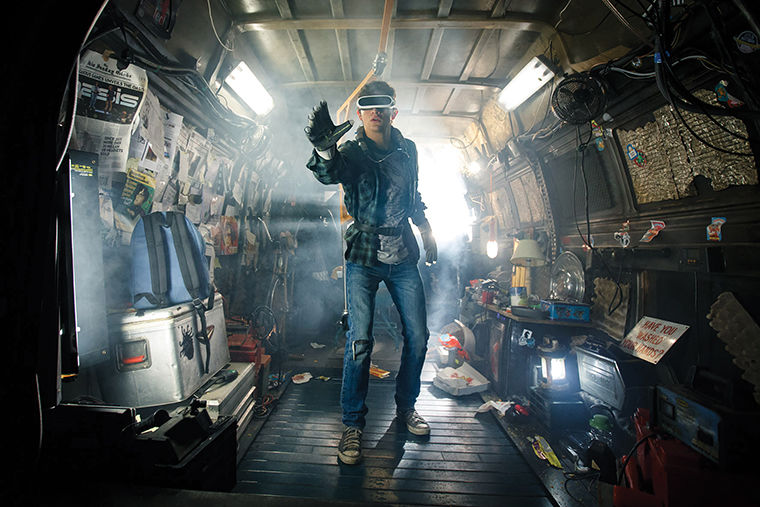“Ready Player One,” fun but flawed
“Ready Player One,” fun but flawed
March 31, 2018
Add one part “Tron,” one part “Hunger Games” and one part “Wreck-It Ralph,” then subtract a few degrees of quality from each, and you have Steven Spielberg’s “Ready Player One,” which premiered in theaters March 29.
Adapted from Ernest Cline’s 2011 science-fiction novel of the same name, “Ready Player One” is set in 2045, when everyone’s lives are dominated by a virtual-reality wonderland called the OASIS.
In the OASIS, people can appear as an avatar of their design, presenting as any gender, race, body type, warlock or Iron Giant they desire. James Halliday, played by Mark Rylance (“Bridge of Spies”), the creator of the OASIS, has left behind a quest after his death: Complete three hidden tasks, based on players’ knowledge of 1980s pop culture he loved, and inherit his shares of the company.
The story follows Wade Watts, played by Tye Sheridan (“X-Men: Apocalypse”), an unremarkable misfit boy-turned-reluctant hero after he cracks the first task. Watts is every nerdy straight white male protagonist, given little personality other than his fascination with Halliday. Despite having little to work with, Sheridan nicely incorporates nuance and emotion to his performance.
The plot of “Ready Player One” is fairly predictable. Watts gets swept into and eventually leads a rebellion against IOI, a company funneling all its money into beating Halliday’s quest. This David and Goliath narrative of the little guy taking on the corporate giant has been done to death, and “Ready Player One” adds nothing new.
The movie also uses women as plot devices. Halliday’s fixation with Kira, his business partner’s wife, plays a large role in his quest. One of the tasks even turned a virtual version of her into a literal damsel in distress. Art3mis, played by Olivia Cooke (“Me and Earl and the Dying Girl”), who has a character arc of her own, exists only for Watts to finally prove to himself that he does not have the fears Halliday had.
Although some of these troubling, unoriginal details are hard to ignore, “Ready Player One” is incredibly fun to watch.
Alternating between the hazy aesthetic of the real world and the vibrant neon of the OASIS makes the movie a visual treat. The tropey characters have few surprises to offer, but they are still compelling, well-acted and funny, particularly Aech, played by Columbia’s 2006 television alumna Lena Waithe. The writing is witty and chock full of cultural references that will delight most audience members. It is a pleasant 2 hours and 19 minutes of entertainment.
It certainly could have better explored why people of color, women or people who are not traditionally attractive might feel compelled to present as attractive, powerful avatars in the OASIS. It also could have given Kira more agency, rather than placing her as a pawn on Halliday and Watts’ chessboard of character development.
Ultimately, though, as a children’s story of good versus evil, it didn’t have a responsibility to do either of those things. So, if you’re able to overlook its problems, “Ready Player One” is fun, nostalgic and, for the most part, harmless.








